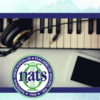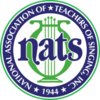Transforming lives through
the power of singing.
NATS offers a variety of lifelong learning experiences to its members, with workshops, Intern Programs, master classes and conferences, all beginning at the chapter level and progressing to national events. Our mission is to advance excellence in singing through teaching, performance, scholarship, and research.
Learn More| Oct. 19: SNATS Virtual Kickoff
posted on 10:53 AM, September 16, 2025
Discover opportunities for SNATS chapters and student leaders
|
|
 |
NATS announces mentors for 2025-26 composer program
posted on 1:12 PM, September 2, 2025
Ten composers will guide early-career participants in writing for voice
|
 |
Brenda Smith to chair NATS Books editorial board
posted on 8:05 AM, August 19, 2025
Smith will oversee upcoming titles and work with prospective authors
|
 |
NATS names Deborah Conquest as associate editor of Inter Nos
posted on 11:03 AM, August 12, 2025
Conquest will begin her new role with the spring 2026 issue
|
 |
NATS national officer nominations: 2026-2028 term
posted on 3:03 PM, August 4, 2025
View the slate for the next term
|
 |
NATS unveils new Barbara Hill Moore Emerging Teaching Artist Award
posted on 10:35 AM, July 22, 2025
Biennial award to support dual-career voice teachers and performers
|
| Archives | |
| RSS |
 RSS
RSS